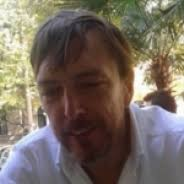[111] How crystals form: A theory of nucleation pathways
Recent advances in classical density functional theory are combined with stochastic process theory and rare event techniques to formulate a theoretical description of nucleation, including crystallization, that can predict nonclassical nucleation pathways based on no input other than the interaction potential of the particles making up the system. The theory is formulated directly in terms of the density field, thus forgoing the need to define collective variables. It is illustrated by application to diffusion-limited nucleation of macromolecules in solution for both liquid-liquid separation and crystallization. Both involve nonclassical pathways with crystallization, in particular, proceeding by a two-step mechanism consisting of the formation of a dense-solution droplet followed by ordering originating at the core of the droplet. Furthermore, during the ordering, the free-energy surface shows shallow minima associated with the freezing of liquid into solid shells, which may shed light on the widely observed metastability of nanoscale clusters.
Recommended citation: James F. Lutsko, "How crystals form: A theory of nucleation pathways", Science Advances, 5, eaav7399 (2019)
Download Paper
